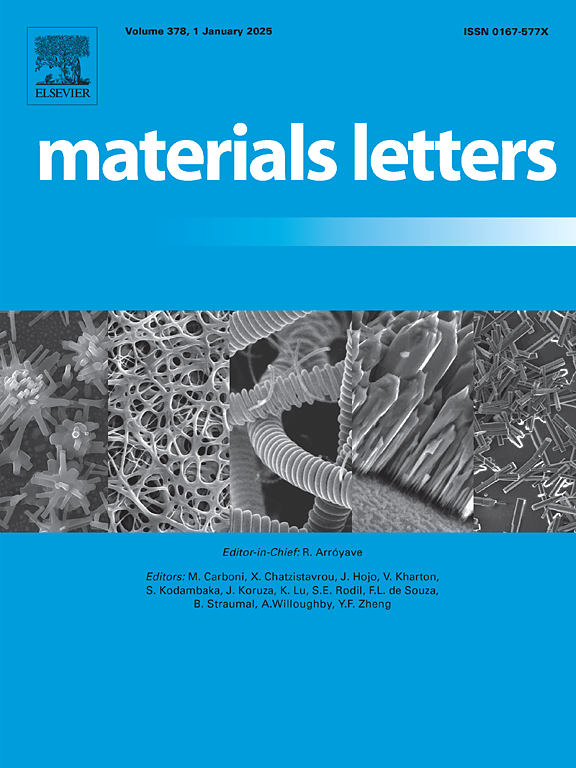Enhanced corrosion resistance of 2024-T351 aluminum alloy through high-speed laser texturing using a polygon scanner
IF 2.7
4区 材料科学
Q3 MATERIALS SCIENCE, MULTIDISCIPLINARY
引用次数: 0
Abstract
Corrosion accounts for approximately 3 % of the global GDP annually, primarily due to degradation in metallic materials such as aluminum and steel. This study explores high-speed direct laser writing (DLW) using a polygon scanner combined with an ultrafast picosecond laser source to enhance corrosion resistance of aluminum surfaces. Laser structuring was performed on aluminum 2024-T351, a low-corrosion-resistant alloy, applying laser fluences up to 8.7 J/cm2. Surface analyses revealed periodic as well as random nanostructures with structure depths up to 40 µm ± 5.3 µm. Wettability analysis showed only a moderate increase in water contact angles (WCAs) to 110° ± 6°, which is insufficient for superhydrophobic behavior. However, the corrosion performance, assessed through potentiodynamic curves, demonstrated a reduction in corrosion rates from 19.1 to 1.45 µm/year, achieving an inhibition efficiency of 93 %.

利用高速激光形变多边形扫描器增强2024-T351铝合金的耐腐蚀性能
腐蚀每年约占全球GDP的3%,主要是由于铝和钢等金属材料的降解。本研究探索了使用多边形扫描仪结合超快皮秒激光源的高速直接激光写入(DLW),以提高铝表面的耐腐蚀性。对低耐腐蚀合金铝2024-T351进行激光加工,激光影响高达8.7 J/cm2。表面分析显示周期性和随机纳米结构,结构深度可达40µm±5.3µm。润湿性分析表明,水接触角(wca)仅适度增加到110°±6°,不足以产生超疏水行为。然而,通过动电位曲线评估的腐蚀性能表明,腐蚀速率从19.1 μ m/年降低到1.45 μ m/年,达到93%的缓蚀效率。
本文章由计算机程序翻译,如有差异,请以英文原文为准。
求助全文
约1分钟内获得全文
求助全文
来源期刊

Materials Letters
工程技术-材料科学:综合
CiteScore
5.60
自引率
3.30%
发文量
1948
审稿时长
50 days
期刊介绍:
Materials Letters has an open access mirror journal Materials Letters: X, sharing the same aims and scope, editorial team, submission system and rigorous peer review.
Materials Letters is dedicated to publishing novel, cutting edge reports of broad interest to the materials community. The journal provides a forum for materials scientists and engineers, physicists, and chemists to rapidly communicate on the most important topics in the field of materials.
Contributions include, but are not limited to, a variety of topics such as:
• Materials - Metals and alloys, amorphous solids, ceramics, composites, polymers, semiconductors
• Applications - Structural, opto-electronic, magnetic, medical, MEMS, sensors, smart
• Characterization - Analytical, microscopy, scanning probes, nanoscopic, optical, electrical, magnetic, acoustic, spectroscopic, diffraction
• Novel Materials - Micro and nanostructures (nanowires, nanotubes, nanoparticles), nanocomposites, thin films, superlattices, quantum dots.
• Processing - Crystal growth, thin film processing, sol-gel processing, mechanical processing, assembly, nanocrystalline processing.
• Properties - Mechanical, magnetic, optical, electrical, ferroelectric, thermal, interfacial, transport, thermodynamic
• Synthesis - Quenching, solid state, solidification, solution synthesis, vapor deposition, high pressure, explosive
 求助内容:
求助内容: 应助结果提醒方式:
应助结果提醒方式:


